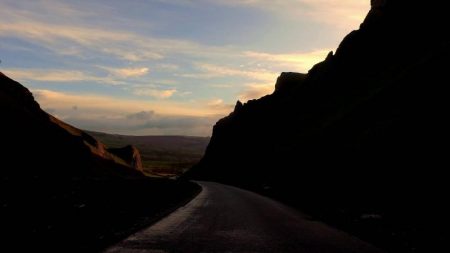
Although I’ve been involved in media production for over 25 years, the rate of change still amazes me.
My niece and nephew are blissfully unaware of the incredible exponential leaps technology has made over the last 50 years to where the phone they hold in their hand has many times the power that the early room-sized super computers had.
For me though, moving from the early days of DV to 4K and beyond, the single biggest influence on video production is not the cameras or computers, but actually the internet connectivity and it’s speed relative to when it first started.
Workflows are incredibly dynamic and accessible. I have clients in the USA, Italy, France, Germany, Holland, Israel and beyond. Apart from the actual physical filming, all else is communicated via the internet – whether that be messaging platforms, video hosting solutions, or collaborative development platforms.
The technology now is robust, high quality and pound for pound – amazing value for what you get. The constant lowering of price for what you get has democratized technology and made it more accessible for everyone.
So at Big Ant – we have high speed networks, computers, internet connections, great cameras, skills and wonderful clients.
So what is next?
I am more and more concerned with the direction we are going with our emissions and “throw away and replace” culture.
I looked at our business a couple of years ago and decided to start small on a number of areas and work on the principle of “little and lots” with the hope that I would be tackling achievable goals which would motivate me to do more, and would benefit both myself and the environment.
This may not sound like much, but so far I have:
- replaced email server with a system of notifications via Smartwatch, and a web client for correspondence
- replaced client server with an efficient NAS device that uses a huge amount less energy
- changing the network switch for a passively cooled version that uses a quarter of the power
- replaced air conditioning unit with one that uses half the power of the previous one, and
- increased insulation within my office to the point where the main editing workstations generate enough heat to keep the office warm during office hours.
- changed the graphics cards in the workstations to ones with similar performance but half the power consumption
- putting induvidual switches on the lights so instead of having all of them on, I can switch only the ones I need on
- changing all lights to LED
- adding smaller lower powered speakers to my audio monitoring system so the large system is only switched on when finalising / mastering the audio
- ensuring everything that can be turned off rather than left on standby is.
- stopping needless phone upgrades – I have now had the same mobile phone for 3 years
- cutting out needless meetings and car journeys – my mileage has gone down from 19,000 pa to around 6000 pa. Skype has played a large part in this – thank you Microsoft.
- Instead of filming overseas myself, where possible I have developed relationships with local video providers to prevent unnecessary travel/flights.
Whilst this may not seem like a big deal, it has reduced my energy consumption to the point where I am now looking at solar/battery power to take my office off the grid.
I am very aware that what I do is not crucial in the way what a nurse/doctor does is, so I want my impact to be minimised as much as possible – that way I get to sleep at night 🙂
